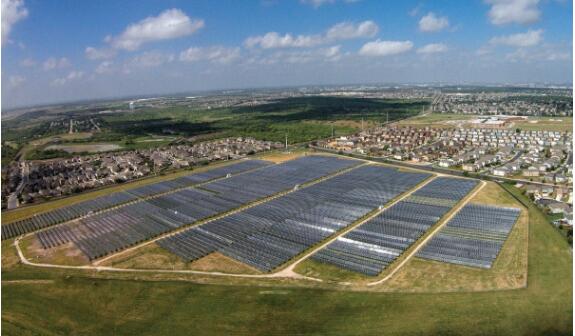Average construction costs for US utility-scale solar PV installations continued to drop in 2020, research from the US Energy Information Administration (EIA) has said, whilst onshore wind and natural gas costs rose.
The EIA reports that the capacity weighted average cost of solar PV systems fell 8% in comparison with 2019, to US$1,655/kW. The decrease was mostly driven by a 17% drop in the construction cost for cadmium telluride tracking modules, hitting US$1,631/kW at their lowest point. Crystalline silicon fixed-tilt modules remained the most expensive major solar technology, though these also saw a 13% price reduction to US$1,957/kW.
Tracking systems were cheaper than fixed-tilt modules across the board. Crystalline silicon tracking systems, which accounted for 61% of utility-scale US solar capacity added to the grid in 2020, averaged US$1,578/kW, making them cheaper than their fixed-tilt alternative by almost US$400/kW, and cheaper than both cadmium telluride tracking and fixed-tilt units.
Though the EIA’s report says that US utility-scale solar construction costs were significantly higher than both onshore wind and natural gas, by 2020 the price had dropped dramatically.
Prices continued their downward trend last year, with research by Wood-Mackenzie indicating that, though 2021 saw a slight rise in residential and commercial PV prices, utility-scale installations dropped below the 2020 price to US$0.93/W(US$930/kW).
Between 2019 and 2020, onshore wind and natural gas construction costs rose 8% and 4% respectively in comparison with 2019 prices, according to the EIA Indeed, recent global price spikes have pushed gas prices in the succeeding two years to astronomical highs, and even when they stabilise the global trends towards cheaper solar PV and more expensive gas will see gas plants struggle to compete in the energy landscape in the US and in Europe, as reported in PV Tech last week.
Recent issues with module procurement saw US solar deployments fall 23% in Q3 of 2022, but the recently introduced US$369 billion Inflation Reduction Act with its tax credits for US-manufactured solar is predicted to begin taking serious effect in 2024, and will likely continue to lower construction and manufacturing costs in the country.
US utility-scale solar construction costs fell 8% in 2020 – EIA
Source:PVTECH
ViaWill Norman






